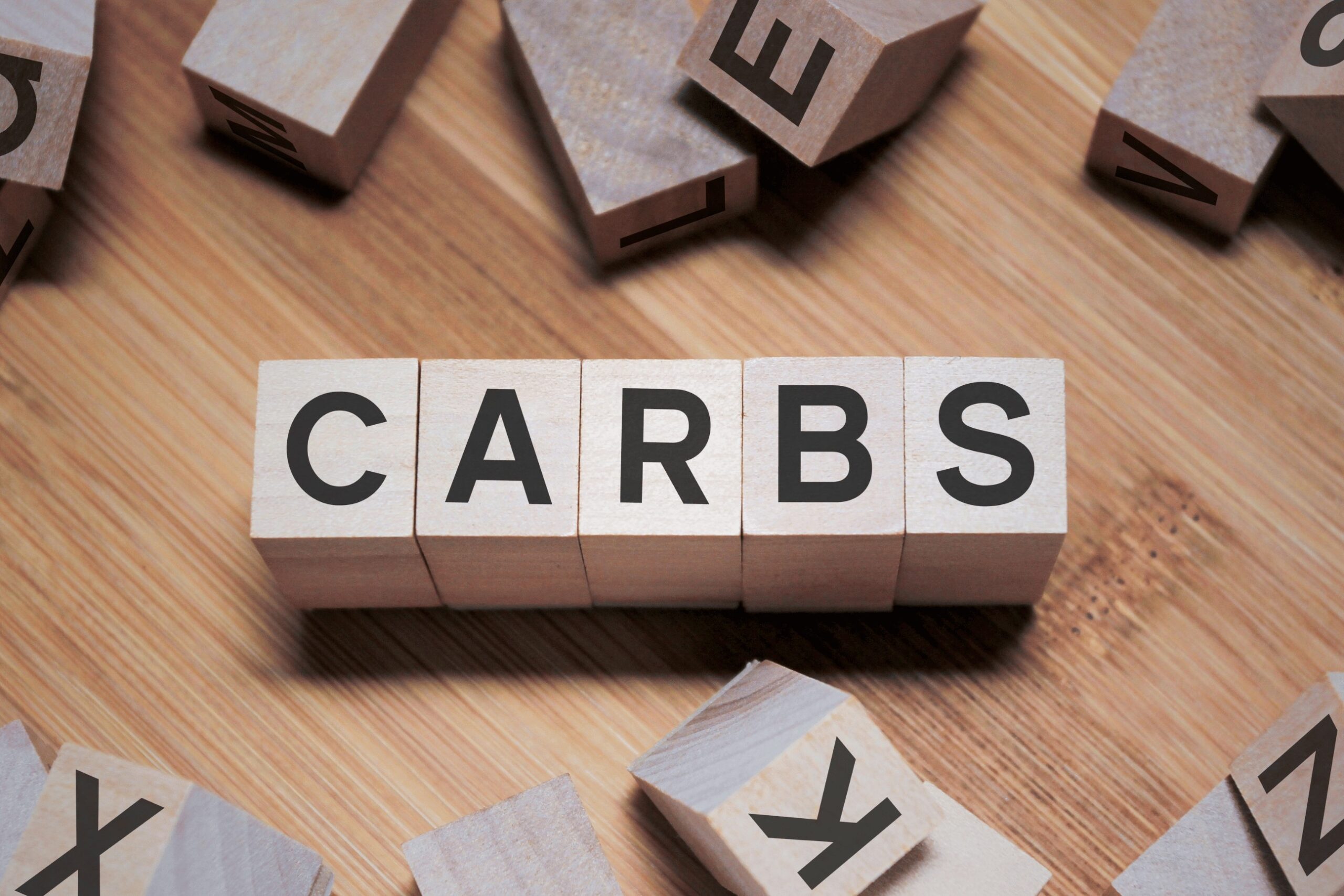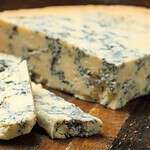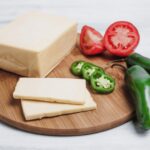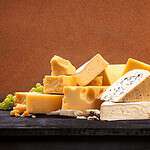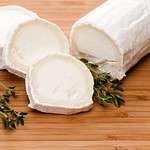When considering the nutritional values of different foods, carbohydrates are often a focal point, especially for those monitoring their intake for health reasons. Cheese, a common ingredient in various diets, traditionally has a lower carbohydrate content which could make it a suitable option for low-carb diets. However, the amount of carbs in cheese can vary depending on the type of cheese and how it’s processed. Most natural cheeses have a minimal amount of carbohydrates since the lactose, a type of sugar that is a carbohydrate, is largely removed during the cheese-making process.

The nutritional profile of cheese is not limited to its carbohydrate content. It also includes proteins, fats, vitamins, and minerals. The specific values differ among cheese varieties, with hard, aged cheeses typically containing less lactose compared to soft, fresh ones. These nutritional differences can play a substantial role in diet planning, especially for individuals with dietary constraints such as lactose intolerance or those adhering to a ketogenic diet. The diversity in cheese textures and types also allows for a wide range of culinary uses, from garnishing salads to creating sauces or as standalone snacks.
Key Takeaways
- Cheese generally has low carbohydrate content, suitable for low-carb diets.
- Nutritional values vary across different types of cheese, impacting diet considerations.
- Cheese offers versatility in cooking and can accommodate various dietary needs.
Nutritional Profile of Cheese

In this section, we will examine the essential aspects of cheese’s nutritional makeup, including the content of carbs, fats, proteins, vitamins, and minerals. We will explore how these elements vary across different types of cheese.
Macronutrient Breakdown
Cheese provides a rich source of protein and fat, with varying levels of carbohydrates depending on the type. The majority of cheese varieties contain high amounts of saturated fats and proteins, with carbohydrates generally present in lower quantities.
Caloric Content
Cheese is energy-dense, with calorie counts depending on the type of cheese and its fat content. For example, high-fat cheeses like blue cheese are calorically denser compared to low-fat options like cottage cheese.
Vitamins and Minerals
Cheese is an excellent source of calcium and provides significant amounts of Vitamin A. It also contains other valuable minerals like phosphorus and zinc, contributing to a balanced diet.
Carbohydrates in Different Cheese Varieties
Carbohydrate content varies by cheese type:
- Hard Cheeses (Parmesan, Cheddar): 1-3 grams per ounce
- Soft Cheeses (Brie, Camembert): 0.1-0.5 grams per ounce
- Fresh Cheeses (Cottage Cheese, Ricotta): 3-5 grams per ounce, with some versions (e.g., cottage cheese with fruit) having more
Understanding Fats in Cheese
Cheese fats are primarily saturated, which can impact cholesterol levels. The total fat content can range broadly:
- Full-Fat Cheeses (Gouda, Swiss): 7-9 grams of fat per ounce
- Reduced-Fat Cheeses (part-skim Mozzarella, 2% cottage cheese): about half the fat of their full-fat counterparts
Protein Content in Cheese
Cheese is a high-protein food. Harder cheeses generally contain more protein than softer varieties.
- Hard Cheeses (Parmesan): 10 grams per ounce
- Soft Cheeses (Ricotta): 7 grams per ounce
Sugar and Fiber
Most cheeses have negligible amounts of sugar and fiber. Lactose, the primary sugar in dairy, is found in lower quantities in aged cheeses and nearly absent in very hard or aged varieties, such as Parmesan or aged Cheddar. Cheese generally does not contain dietary fiber.
Dietary Considerations and Cheese

When considering cheese in our diets, it’s crucial to understand its macronutrient profile and its impact on various nutritional plans. Cheese can be a valuable part of weight loss, keto, and low-sodium diets, with attention to serving sizes and types consumed.
Cheese in Weight Loss
Incorporating cheese into a weight loss regime requires balance. Most cheeses are high in fat, which means they are also high in calories. However, cheese is a good source of protein and calcium, which can be satiating and help maintain muscle mass during weight loss. Opting for lower-fat cheeses in moderation and monitoring serving sizes are key strategies:
- Cottage cheese: A low-fat option high in protein.
- Mozzarella: Typically lower in fat, especially in the skim-milk variant.
Cheese on a Keto Diet
Cheese is often included in keto-friendly diets due to its high-fat and low-carbohydrate content. It can provide both fat and flavor while keeping carb intake minimal, essential for maintaining ketosis. Cheese also contains dietary fiber, which can benefit digestion without impacting net carbs significantly. However, it’s important to choose cheeses with minimal to no added sugars. Here are types that fit well into a keto diet:
- Cheddar: Negligible carbs and moderate protein.
- Cream cheese: High in fat with very low carbs.
Cheese for Low-Sodium Diets
Reducing sodium intake can be paramount for those concerned with cardiovascular disease. Cheese can be high in sodium, so opting for lower-sodium cheeses is wise on a low-sodium diet. Keep an eye on serving sizes and nutritional labels, as cheese variants can differ markedly in sodium content:
- Swiss cheese: Naturally lower in sodium.
- Ricotta, fresh: Has less sodium than aged cheeses.
Types and Textures of Cheese
We often categorize cheese based on its aging and firmness, which directly influences its texture and suitability for various food pairings.
Aged vs. Fresh Cheese
Aged Cheeses are typically firmer in texture and have richer flavors due to the longer fermentation period. Varieties like aged cheddar or gouda have a crystalline texture and a robust taste. On the other hand, Fresh Cheeses like mozzarella or feta are moist and soft. Their flavors are usually milder and they have a creamy texture, making them ideal for salads and lighter dishes.
Soft vs. Hard Cheese
The moisture content in Soft Cheeses renders them spreadable and they often exhibit a buttery texture; examples include Brie and Camembert. Hard Cheeses, such as Parmesan and Manchego, are drier and feature a dense texture. We leverage this characteristic by grating them over dishes for a flavor boost.
Cheese and Food Pairings
We find that soft cheeses pair wonderfully with fruits, adding a creamy contrast to the sweetness. Brie combined with apples or pears can enhance the flavors of both the cheese and the fruit. For hard cheeses, consider a savory approach. A slice of aged cheddar adds depth to a burger, while a sprinkle of Parmesan can transform a pasta dish.
Practical Information

We understand the importance of knowing the carbohydrate content in cheese, especially for those monitoring their intake. Here, we provide details on how to measure servings, ways to store cheese, and tips for cooking with this versatile dairy product.
Serving Sizes and Measurements
When considering the carbohydrate content of cheese, it is crucial to start with accurate serving sizes. One ounce (about 28 grams) is a common serving size for cheese. For harder cheeses, such as cheddar or parmesan, this is roughly the size of a pair of dice. In contrast, for spreadable or softer cheeses, a tablespoon is a common measure. Here’s a brief table outlining approximate carbohydrate content in different types of cheese per ounce:
| Type of Cheese | Carbohydrates (g) per ounce |
|---|---|
| Cheddar | 0.9 |
| Mozzarella | 0.6 |
| Brie | 0.1 |
| Cream Cheese | 1.0 |
| Feta | 1.2 |
Remember that the values can vary slightly depending on the specific brand and type of cheese.
Cheese Storage Tips
To maintain cheese quality and extend its shelf life, proper storage is essential. We recommend wrapping hard cheeses in parchment paper followed by a loose layer of plastic wrap to allow the cheese to breathe while preventing it from drying out. For soft cheeses, keep them in their original packaging if possible or transfer them to an airtight container. Store cheese in the lower part of the refrigerator, where the temperature is consistently cold.
Cooking with Cheese
When cooking with cheese, it’s helpful to know how different types handle heat. Hard, aged cheeses are excellent for grating over dishes and baking, as they have low moisture content and melt without becoming greasy. On the other hand, fresh, soft cheeses are best added at the end of cooking or used raw in salads to preserve their delicate textures and flavors. Be mindful that cooking does not significantly alter the carbohydrate content of cheese, so refer to the serving sizes mentioned earlier to keep track of your intake.
Health Considerations

When discussing the health considerations of cheese in terms of carbohydrate content, we must also consider its impact on cardiovascular health, potential allergens and intolerances, and its role in bone health.
Cheese and Cardiovascular Health
Cheese is rich in both cholesterol and saturated fats, which can be factors in cardiovascular disease if consumed in high amounts. However, cheese also provides essential nutrients like calcium and certain vitamins which may have protective effects. It’s important for us to balance our intake and choose cheeses that are lower in fat and cholesterol for better cardiovascular health. We can opt for options like part-skim mozzarella or ricotta which have less saturated fat.
- Low-Fat Cheeses (per 1 oz):
- Cottage cheese: 1g fat, 1mg cholesterol
- Part-skim mozzarella: 4.5g fat, 15mg cholesterol
Potential Allergens and Intolerances
Anyone with dairy allergies or lactose intolerance must be cautious with cheese consumption. Cheese contains lactose, a sugar found in milk and dairy products, which can cause digestive issues for those with lactose intolerance. We should look for lactose-free cheese options or harder cheeses, which typically have less lactose due to their manufacturing process. We must also be aware that dairy allergies can be serious and cheese should be avoided entirely for those affected.
- Lactose Content in Common Cheeses (per 1 oz):
- Cheddar: 0.0-2.1% lactose
- Swiss: 0.0-3.4% lactose
Cheese and Bone Health
Cheese can be a great source of calcium, which is crucial for the development and maintenance of strong bones. We know that bone health is supported by adequate calcium intake, and cheese can contribute to this alongside other foods rich in vitamins D and K, which aid in calcium absorption. It’s important for us to include a variety of calcium-rich dairy products in our diet to support bone health.
- Calcium-Rich Cheeses (per 1 oz):
- Swiss: 224mg calcium
- Cheddar: 202mg calcium
Culinary Uses of Cheese
Cheese offers an astounding versatility in the kitchen, where it can transform the simplest ingredients into rich and flavorful dishes. From its role in global cuisines to innovative recipes and natural pairings, we’ll explore how cheese elevates culinary experiences.
Cheese in Global Cuisines
We find cheese essential in many traditional dishes around the world. For instance, the Italian pizza often features Mozzarella or Parmesan, while in Mexico, quesadillas showcase varieties like Cheddar or Oaxaca. French cuisine uses many soft cheeses like Camembert and Brie to add depth to their meals. The versatility of cheese means that it can be incorporated into a multitude of culinary traditions, reflecting a region’s culture and flavor preferences.
- Italian: Mozzarella, Parmesan, Ricotta
- Mexican: Cheddar, Oaxaca, Cotija
- French: Camembert, Brie, Roquefort
Innovative Recipes with Cheese
Our culinary creativity can be sparked by integrating cheese into innovative dishes. For instance, consider a gourmet burger with a core of molten blue cheese, or a goat cheese and fruit tart where the tangy cheese balances the sweetness of fresh fruit. We can combine different cheese varieties to create unique flavor profiles that tantalize the taste buds.
Burgers:
- Blue Cheese-stuffed Patty,
- Brie and Caramelized Onions.
Fruit Tarts:
- Goat Cheese with Pear,
- Mascarpone with Strawberry.
Cheese Pairings and Accompaniments
We know the art of pairing cheese with the right accompaniments to enhance its flavor. Some classic pairings include Cheddar with crisp apples or Gouda with sweet grapes. Structuring a cheeseboard often involves a thoughtful selection of bread, nuts, and dried fruits to complement the cheese’s texture and taste.
Cheese and Fruit:
- Cheddar with Apples,
- Gouda with Grapes.
Cheeseboards:
- **Manchego with Almonds,
- Camembert with Figs.
Cheese Manufacturing Process
The cheese manufacturing process involves a series of precise techniques that ensure the transformation of milk into cheese. We utilize specific cultures and enzymes which contribute to the unique characteristics of each cheese, including its texture and flavor. Aging further develops these attributes.
Cheese Making Techniques
Cheese making begins with the standardization and pasteurization of milk. We add enzymes like rennet to coagulate the milk, separating it into curds and whey. The curds, which will become cheese, are cut to the desired size and heated to encourage whey expulsion and curd fusion.
- Milk Standardization: Adjusting fat content for specific cheese types.
- Pasteurization: Heating milk to eliminate pathogens.
- Coagulation: Adding rennet to form curds.
- Curd Processing: Cutting and heating curds, then pressing into molds.
Types of Cheese Cultures
We introduce cultures (beneficial bacteria) to the pasteurized milk before adding rennet. These cultures ferment lactose (milk sugar) into lactic acid, which plays a vital role in the development of the cheese’s flavor and texture.
- Starter Cultures: Lactococcus, Lactobacillus, Streptococcus, and others.
- Flavor Development: Cultures contribute to the cheese’s distinct taste.
Effects of Aging on Cheese
Aging (affinage) allows the cheese to develop its complex flavors and aromas over time. We store cheeses in controlled environments where temperature and humidity are meticulously maintained. During this period, enzymes continue to act on the proteins and fats within the cheese.
- Texture Refinement: Aging transforms the cheese’s texture, making it softer or firmer.
- Flavor Intensification: Longer-aged cheeses exhibit more robust and nuanced flavors.
Frequently Asked Questions
When approaching the carbohydrate content in cheese, it’s important for us to consider the variation among different types of cheese. We’ll dive into the specifics to help guide those on ketogenic diets in choosing cheeses that fit their macros.
What types of cheese are best for a ketogenic diet?
For a ketogenic diet, we find that hard and aged cheeses such as Gouda, Parmesan, and Cheddar are typically the best choices. These varieties usually have fewer carbs per serving.
How does the carb content in cheddar cheese align with keto dietary requirements?
Cheddar cheese is conducive to keto dietary requirements as it contains a minimal amount of carbs. A one-ounce (28 grams) serving of cheddar cheese generally has less than 1 gram of carbs.
What is the carb count in Parmesan cheese?
Parmesan cheese is another excellent choice for keto dieters, with about 0.9 grams of carbohydrates per one-ounce (28 grams) serving. Its low carb count makes it a favorable addition to a keto-friendly diet.
Can cream cheese be considered low-carb and suitable for a ketogenic diet?
Cream cheese can be considered low-carb, containing roughly 1 gram of carbs per tablespoon. It’s suitable for a ketogenic diet when used in moderation.
Which cheese options have the lowest carbohydrate content?
Cheeses that have the lowest carbohydrate content include Camembert, blue cheese, and Brie. Each of these typically contains less than 1 gram of carbs per ounce.
Are there differences in carb levels between cheese and milk in ketogenic diets?
Yes, there are significant differences in carb levels between cheese and milk. Milk contains lactose, a sugar that contributes to its higher carb content, while cheese, especially the harder varieties, has most of the lactose removed during production, resulting in lower carbs.

